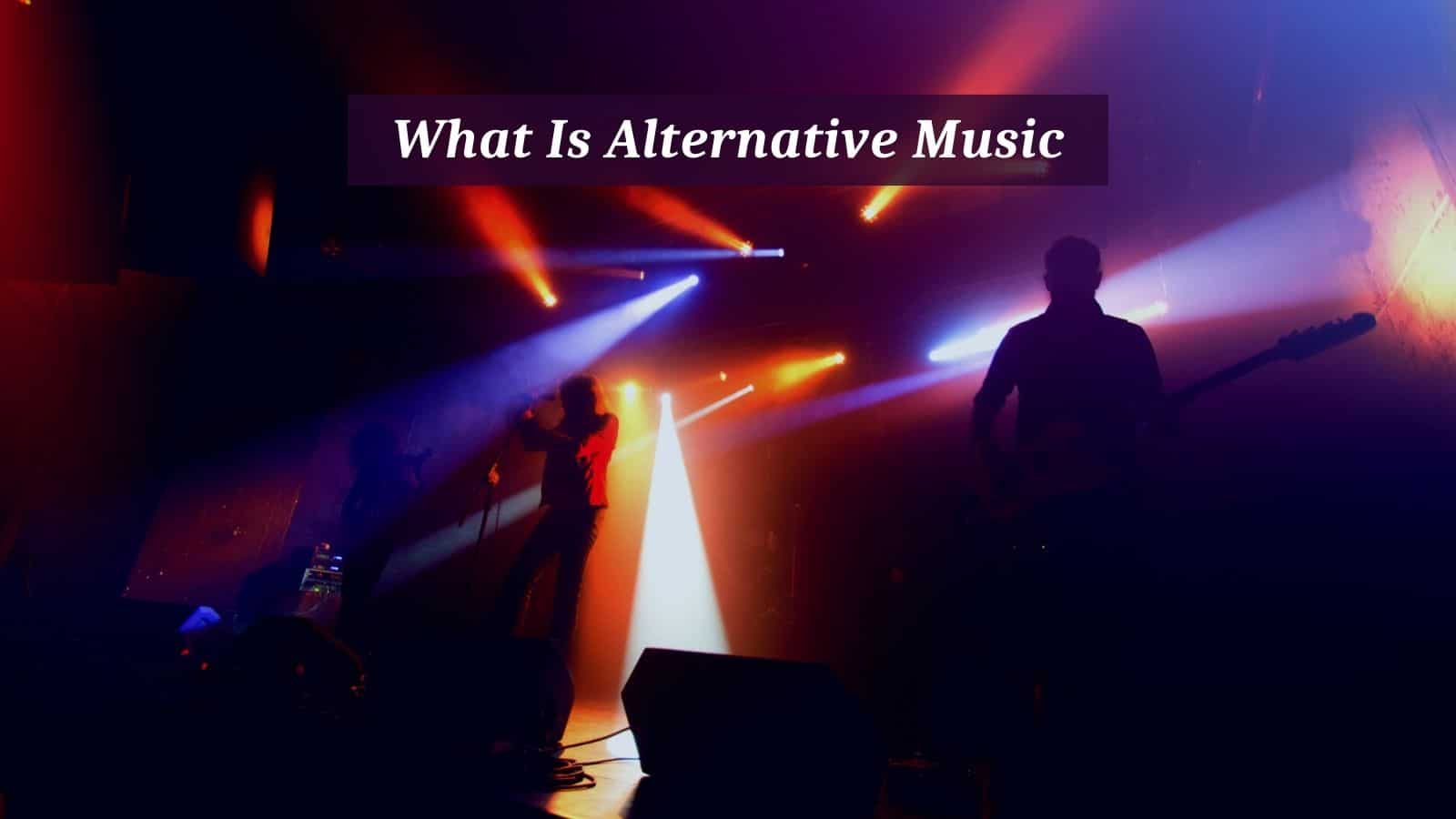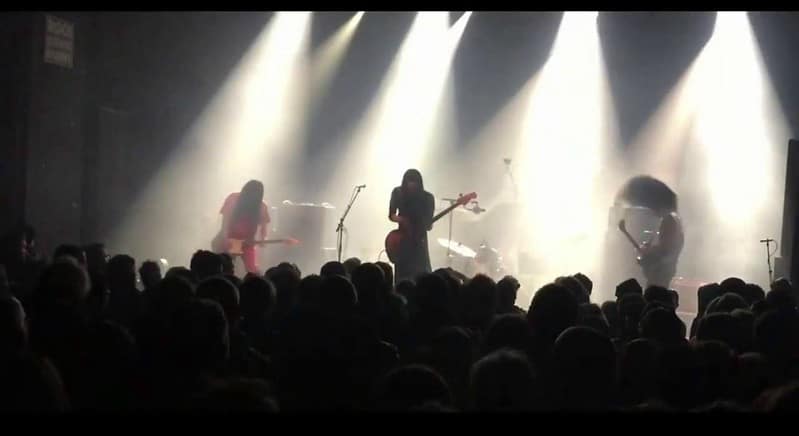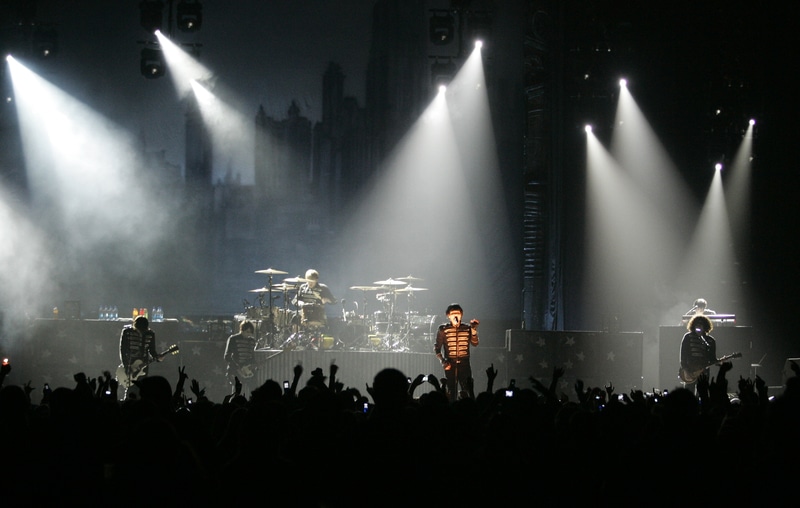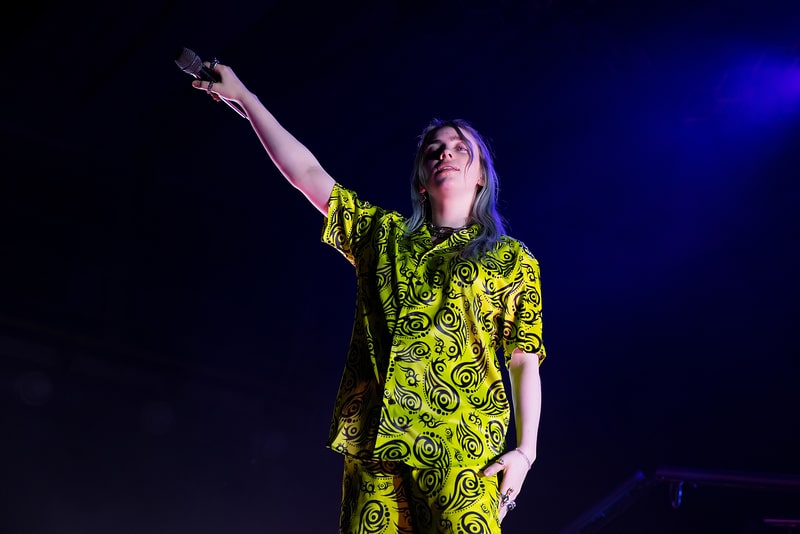
Alternative music is difficult to describe. It isn’t pop; it isn’t rock, and it isn’t in between either… it’s alternative. There are endless possibilities within the sub-genres present within alternative music.
Alternative music focuses on social issues, features layered instruments, and often features intricate guitar melodies.
What Is Alternative Music
Examining and Defining Alternative Music
The best way to describe alternative music is to describe it as metamodernist—an aesthetic movement/philosophy following postmodernism which combines the naivety and innocence of modernism with the sarcasm and bluntness of postmodernism.
But rather than settling on one or the other, metamodernism is constantly moving among numerous poles—think of alternative music as a (metamodernist) pendulum swinging among many points but never settling on a single point.
However, read this article before you carry on and try to find the elements discussed there and see how they relate to alternative music. You’d be surprised how many features are present in alternative music!
Alternative Rock or Alt-Rock
Alternative rock went by a few names but started in the 1970s, already in the independent music scene in the US. Terry Tolin used the term ‘alternative music’ to describe a rock group on the radio in 1979.
Another term was ‘college rock’ because college radios played this alternative type of music popular with college kids. By the 1980s, labels such as ‘postmodern’ and ‘new music’ were used to describe alternative rock.
The examples we’ve included are by no means an exhaustive choice but rather aimed at providing you with an overview of the central tenets of the genre. Here’s a deep dive with many more examples.
Although central to the punk rock movement of the 1980s, Siouxsie and the Banshees was also one of the first bands to gain widespread success. They continually evolved throughout the 1980s, were part of the post-punk scene, and even the emergence of the goth scene in the 1990s.
Before bands like Nirvana or Red Hot Chili Peppers, Siouxsie and the Banshees already signed record deals with major labels.
The early 1990s saw alternative music gaining popularity with bands such as Nirvana, Counting Crows, and R.E.M.
Nirvana’s breakthrough and success triggered the popularity of the alternative music scene, along with grunge, alt-rock, and indie bands getting more airtime on commercial radio stations.
Many alt-rock bands were not interested in mainstream record labels and rejected record deals to keep their authenticity. You can read more about the alt-rock bands of the 1990s here.
Many alternative fans regard Mr. Brightside by The Killers as the renaissance of the alternative music movement.
The juxtaposition of the upbeat instrumentation and the dismal lyrics combined with the happy imagery paints a very different picture of music and image colliding.
He is ‘Mr. Brightside’ after all, so he must put on a brave face while dealing with the feelings of hurt, betrayal, and jealousy. Here’s the demo version; honestly, we cannot decide which version is the best!
Storytelling is integral to My Chemical Romance’s albums, and Welcome to the Black Parade is no exception. It tells the story of a The Patient who dies and leaves his son a phantom to guide him through life.
While the song deals with nihilist themes and accepting death, the upbeat instrumentation forms an ironic-yet-hopeful accompaniment to remind us that hope is never lost.
The band gained popularity with the emo underground scene, giving it a voice to express their concerns, hopes, and dreams.
Alternative Pop or Alt-Pop
While all was well in the punk rock world because it pushed radical social issues, female artists became fed up with punk’s focus on male artists and outright misogynist views towards women.
Enter Riot Grrrl. It addressed issues like patriarchy, racism, rape, classism, domestic violence, and female empowerment. Emotions of anger, rage, and frustration were ‘reserved’ for male artists.
Riot Grrrl, a feminist movement, challenged punk’s male-dominated thinking and attitudes, emerged from the indie rock scene, and paved the way for alt-pop music and female artists.
The power the Riot Grrrl movement gave to female artists is perhaps best exemplified by Alanis Morrissette’s You Oughta Know, which became a feminist anthem.
Alanis used her voice to express her frustration and anger throughout her 1995 album Jagged Little Pill; this also opened the door for female artists to enter the alternative scene.
After Alanis, Avril Lavigne is one of the most influential figures in the alternative pop music scene, such as Complicated and Sk8er Boi. She blurred the lines between alt-rock and alt-pop, drawing from alt-rock, post-grunge, and pop-rock.
She paved the way for female artists in the 2000s, and her influence can also be seen in the emo subgenre, among others.
Thom Yorke’s involvement with the band Radiohead and his solo work set him apart as a musical genius. Apart from writing and composing songs for the band, his style is constantly evolving.
In his piece, Last I Heard (…He Was Circling the Drain), he explores themes of loneliness, depression, and being alone in the city through ethereal singing accompanied by layered electronic instrument sounds.
Thom is perhaps the epitome of alternative music because he defies being placed into a single style; he’s constantly oscillating among many types of music, never settling on a particular one.
Billie Eilish is another artist constantly evolving her musical style and is one of the most influential alternative music artists today.
She weaves various types of music into her own, ranging from pop to emo-pop, goth-pop, indie-pop, experimental-pop, and alt-pop, with a dash of rock and alt-rock influences.
Pinning Billie’s style down is almost impossible. She also doesn’t shy away from addressing social issues in her music.
She comments on social and mental health issues indiscriminately—there’s a level of honesty in her music that’s authentic without bordering on being saccharine—Happier than Ever expresses this through its explosive accompaniment and Billie’s singing in the last part of the song.
Conclusion
Alternative music is tough to pin down—it is everywhere at the same time and nowhere at the same time. Alternative music is a felt experience and gives people a place to belong.
While we cannot supply a definitive definition of alternative music, everyone is welcome and embrace to enjoy the music. As Kurt Cobain from Nirvana sang, come as you are.



